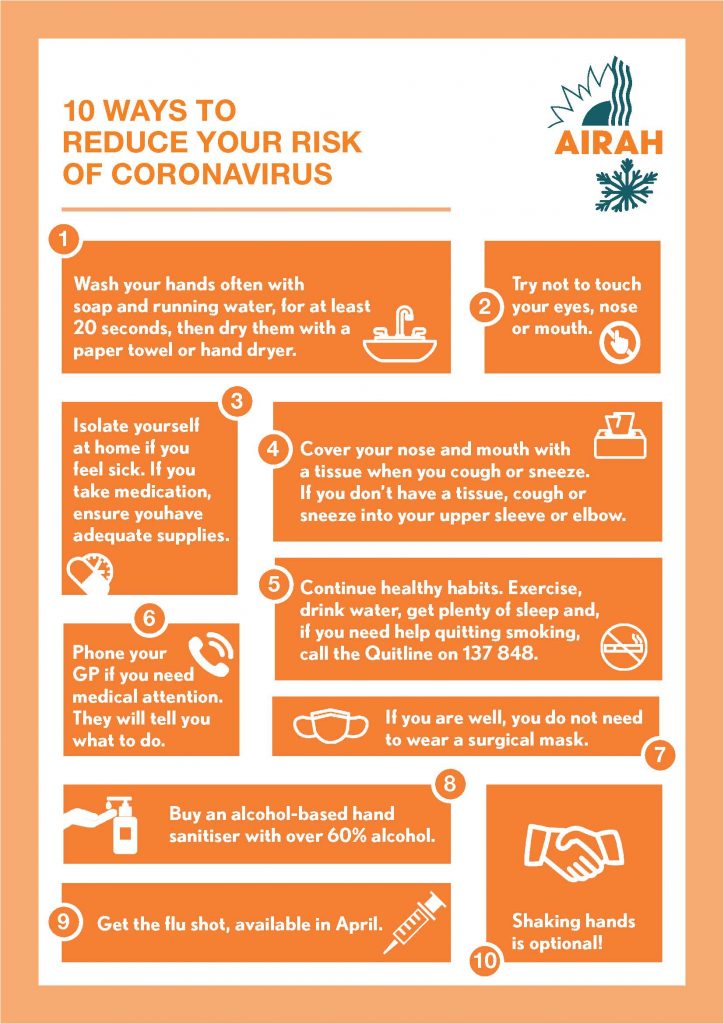
Think ‘Smart’ Before Installing Ducted Air Conditioning
Make the ‘smart’ choice with ducted air conditioning Installing a new ducted air conditioning system is a significant investment and one of the biggest expenses

By AIRAH | March 2020
Given the current coronavirus (COVID-19) pandemic, people are understandably concerned about how the disease is spread and whether air conditioning, refrigeration or other related HVAC&R systems could play a role.
AIRAH has compiled some of the most frequently asked questions and will continue to update these as more information becomes available.
Links to further resources are also provided on the AIRAH Coronavirus Information Page.
There’s no evidence that COVID-19 can be spread through air conditioning systems.
Although we are still learning about the disease, the World Health Organization (WHO) notes that it is mainly spread through contact with respiratory droplets.
When a person with COVID-19 coughs or exhales, these droplets land on objects and surfaces around the person. Other people catch COVID-19 by touching these objects or surfaces, then touching their eyes, nose or mouth.
People can also catch COVID-19 if they breathe in droplets from a person with COVID-19 who coughs out or exhales droplets. The WHO recommends staying more than one metre away from a person who is sick.
Although the current information indicates COVID-19 is not transmitted through air conditioning systems, these systems can help control the spread of the disease.
In line with guidance from SafeWork NSW, AIRAH recommends that employers should seek confirmation from their building owner that the air conditioning system is properly designed and maintained according to Australian Standard AS 1668.2-2012. The use of ventilation and air conditioning in buildings, Part 2: Mechanical ventilation in buildings.
All internal spaces should be well ventilated with flow of fresh air if possible.
Also, research suggests that keeping relative humidity between 40 and 60 per cent will create conditions in which the virus is least viable.
The following interview with ASHRAE presidential member William Bahnfleth contains useful information about the effectiveness of filters, UV and other HVAC technologies in controlling COVID-19.

Make the ‘smart’ choice with ducted air conditioning Installing a new ducted air conditioning system is a significant investment and one of the biggest expenses

Selecting The Best AC Mode and Fan Speed Most air conditioners offer different modes, but by integrating your ducted system with iZone’s Climate Control System,